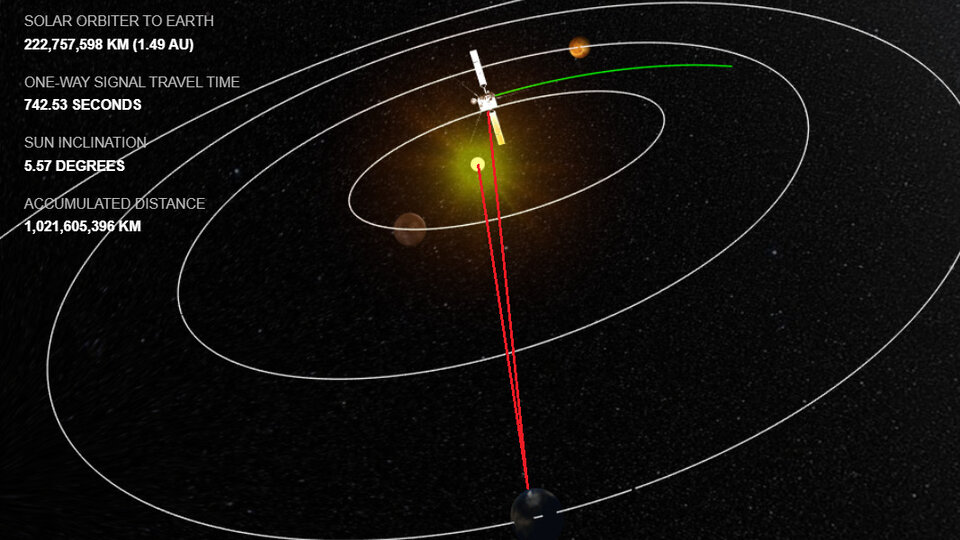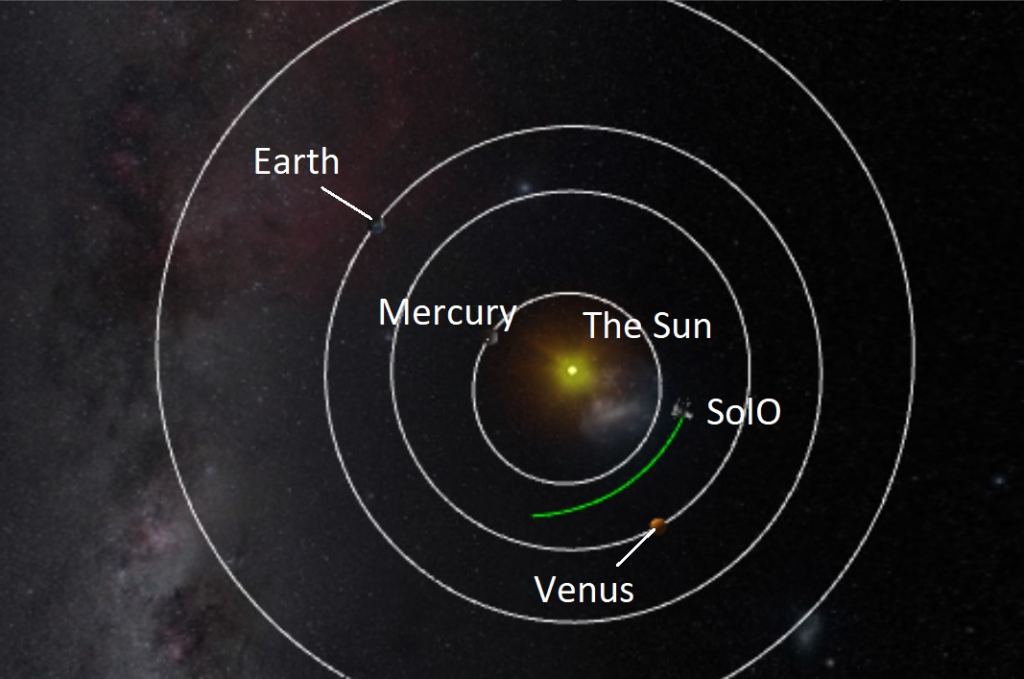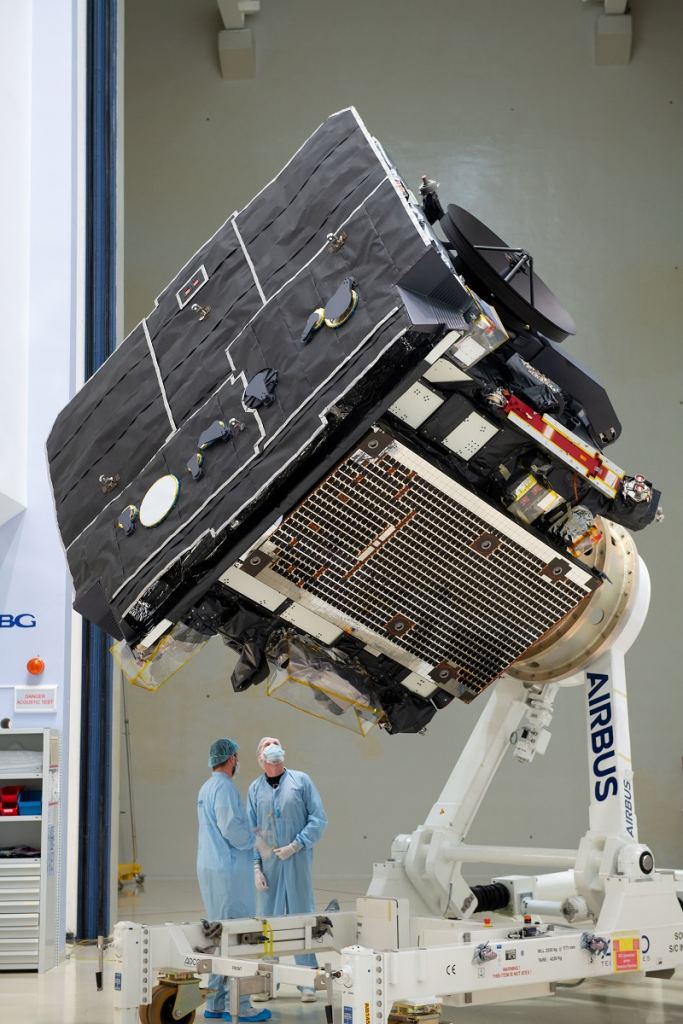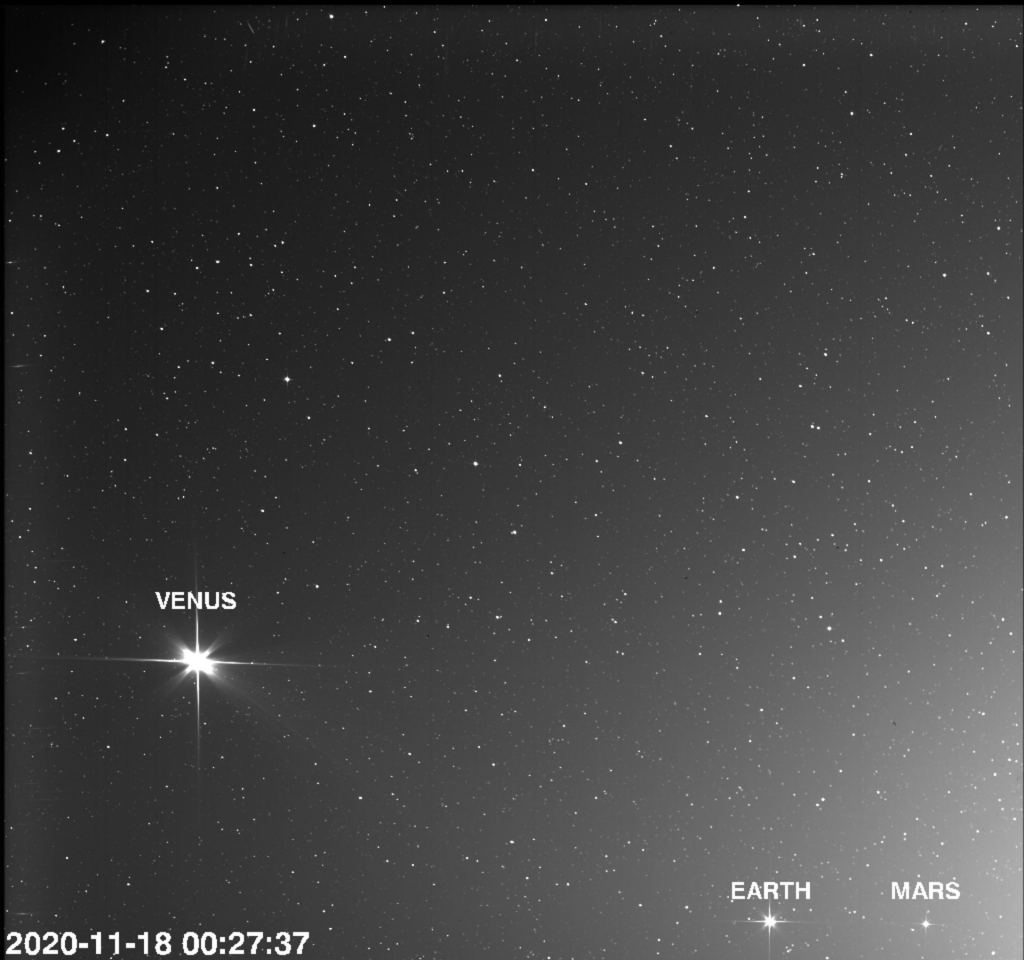ESA’s Solar Orbiter ‘Hides’ Behind the Sun
By David Dickinson
A deep-space mission is about to pull a ‘vanishing act,’ through mid-February, as the European Space Agency’s Solar Orbiter (affectionately known as ‘SolO’ to mission controllers) makes a crucial pass behind the Sun.
The ‘occultation’ as seen from our Earthly vantage point is to be expected. ESA mission controllers prepared for the blackout phase for weeks in advance, uploading commands to SolO to allow the spacecraft to operate autonomously if needed. The Sun generates lots of noise in the radio spectrum, and SolO’s close pass will reduce the transmission rate from 255 bits per second down to a measly 7.8 bits per second, slower than the slowest modem back in the dial-up era.

Launched atop a United Launch Alliance Atlas V rocket from the Cape Canaveral Air Force (now Space Force) Station just over a year ago on February 10th, SolO is making another looping plunge sunward.

The orbit of SolO makes several passes near Venus in order to gradually place it in an inclined orbit around the Sun, allowing it to make observations of our host star’s elusive polar regions. With a seven year primary mission, SolO reached its first perihelion 0.46 Astronomical Units (AU) (48 million miles or 77 million kilometers) from the Sun on June 15, 2020. Eventually, that distance will shorten down to just 0.28 AU (26 million miles or 42 million kilometers) from the Sun, interior to the orbit of Mercury. Primary science operations for SolO are set to begin in October 2021.
Objectives: Daring to Touch the Sun
From this close in vantage point, SolO will make measurements of the nascent solar wind thought to originate deep in the photosphere, as well as take precise measurements of the solar corona and inner heliosphere. To do this, SolO must withstand blazing temperatures ranging up to 1,076 degrees Fahrenheit (580 degrees Celsius), all while making useful scientific observations. It will do so by peering through baffles cut into a 15-inch thick heat shield. The shield is coated with black calcium phosphate to ‘beat the heat.’ The coating is actually an ancient material also used to make cave paintings tens of thousands of years ago during the Upper Paleolithic period, an example of old material now finding a new Space Age application.

The mission thus far has made an initial 7,500 km (4,660 mi) pass near Venus on December 27, 2020, flew through the ion and gas tails of Comet C/2019 Y4 ATLAS in May-June of 2020, and released its first solar image last summer in July 2020.
Next up, SolO will make a second flyby past Venus this coming August, within just a few days of ESA’s Mercury-bound BepiColombo mission completing the same. SolO’s single Earth flyby 283 miles (455 km) distant comes up later this year on November 27, 2021.

Solar Mission Roll Call
SolO joins NASA’s Parker Solar probe and STEREO A spacecraft in heliocentric solar orbit, plus the venerable joint ESA/SOHO mission at the sunward L1 Lagrange point, all keeping tabs on our host star. In Earth orbit, NASA’s Solar Dynamics Orbiter, ESA’s Proba-2 and JAXA’s Hinode all also continue to follow the Sun.
Following solar activity and understanding our host star is vital, as the Artemis missions to return humans to the Moon get into gear. The current Solar Cycle number 25 also poses a curious riddle, and the jury is still out on whether it will be a lackluster phase like the last two preceding cycles, or an over-performer of historic proportions.
Whatever the future may hold, SolO will be on hand after it emerges back from behind the Sun, a witness to the goings on of our tempestuous host star.
Lead image: An artist’s impression of SolO. ESA/ATG Medialab
The post ESA’s Solar Orbiter ‘Hides’ Behind the Sun appeared first on Universe Today.

February 12, 2021 at 07:04PM
via Universe Today read more...

Post a Comment